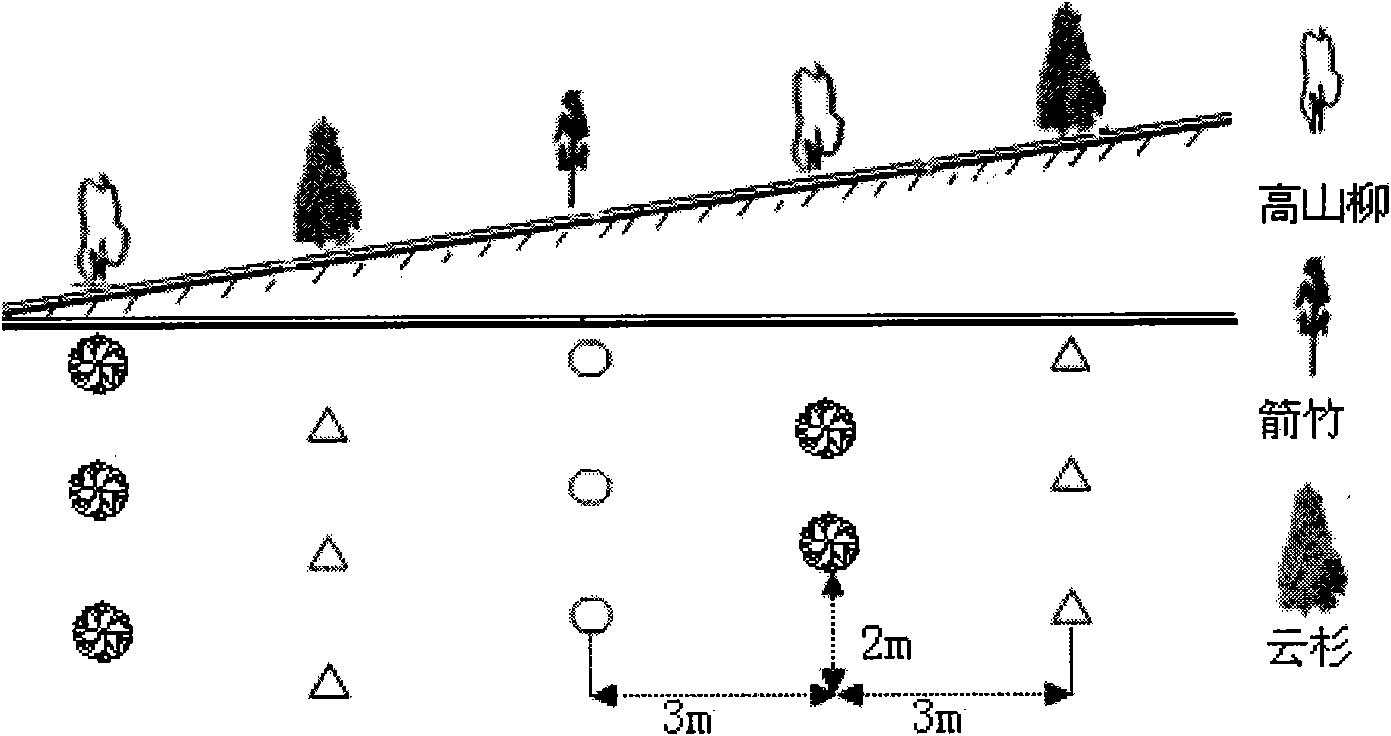Method for recovering staple food bamboos for pandas in subalpine regions
A technology of restoration methods in alpine areas, applied in the fields of botanical equipment and methods, horticulture, forestry, etc., can solve the problems affecting the restoration of the giant panda's staple food bamboo, the degradation of the giant panda's habitat, and the slow growth of bamboo, to avoid soil erosion, The effect of protecting species diversity and promoting rapid recovery
- Summary
- Abstract
- Description
- Claims
- Application Information
AI Technical Summary
Problems solved by technology
Method used
Image
Examples
Embodiment 1
[0023] Embodiment 1 Arrow bamboo is directly planted under the subalpine dark coniferous forest above an altitude of 2700 meters
[0024] Main bamboo species: Arrow bamboo (Fargesia denudata Yi)
[0025] Alternative bamboo species: cold arrow bamboo (Bashania fangiana (A.Camus) Keng f.), Huaxi arrow bamboo (Fargesia nitida (Mitford) Keng f.), abundant fruit arrow bamboo (Fargesia ferax (Keng) Yi), less flower arrow bamboo (Fargesia pauciflora (Keng) Yi), Fargesia robusta Yi, Yushania lineolata Yi, Fargesia scabrida Yi, Fargesia rufa Yi, Fargesia obliqua Yi
[0026] Seedling type: bamboo stalk, seedling age 1 year, seedling specification I, II.
[0027] Seedling treatment: 5-7 plants / cluster, keep the branches, the bud eyes are intact, do not hurt the roots, bring more soil, keep moisture.
[0028] Soil preparation method: strip or block land preparation, which can maintain water and soil and save labor and material resources.
[0029] Configuration method: pin-shaped config...
Embodiment 2
[0036] Example 2 Mixed combination of arbor, shrub and bamboo on the grassy slope of the sub-alpine at an altitude of 2900-3200 meters
[0037] Combination mode: soap willow + spruce + arrow bamboo mode
[0038] Main tree species: soap willow (Salix wallichiana Anderss.), purple fruit spruce (Picea purpurea Mast.), cold arrow bamboo (Bashania fangiana (A.Camus) Keng f.)
[0039]Alpine willow (Salix taiwanalpina Kimura), Minjiang fir (Abies faxoniana Rehd.), rough spruce (Piceaasperata Mast.), vacant arrow bamboo (Fargesia denudata Yi), Huaxi arrow bamboo (Fargesia nitida (Mitford) Keng f .), Fargesia ferax(Keng)Yi, Fargesia pauciflora(Keng)Yi, Fargesia robusta Yi, Yushania lineolata Yi, Fargesia scabrida Yi), Qingchuan Arrow Bamboo (Fargesia rufa Yi), Tuanzhu (Fargesia obliqua Yi)
[0040] Types of seedlings: Bare root or cuttings of Saponaria saponis, seedling age of 1 year, seedling specification I and II; spruce bare root or container seedling, seedling age of 1 year, see...
PUM
 Login to View More
Login to View More Abstract
Description
Claims
Application Information
 Login to View More
Login to View More - R&D
- Intellectual Property
- Life Sciences
- Materials
- Tech Scout
- Unparalleled Data Quality
- Higher Quality Content
- 60% Fewer Hallucinations
Browse by: Latest US Patents, China's latest patents, Technical Efficacy Thesaurus, Application Domain, Technology Topic, Popular Technical Reports.
© 2025 PatSnap. All rights reserved.Legal|Privacy policy|Modern Slavery Act Transparency Statement|Sitemap|About US| Contact US: help@patsnap.com


